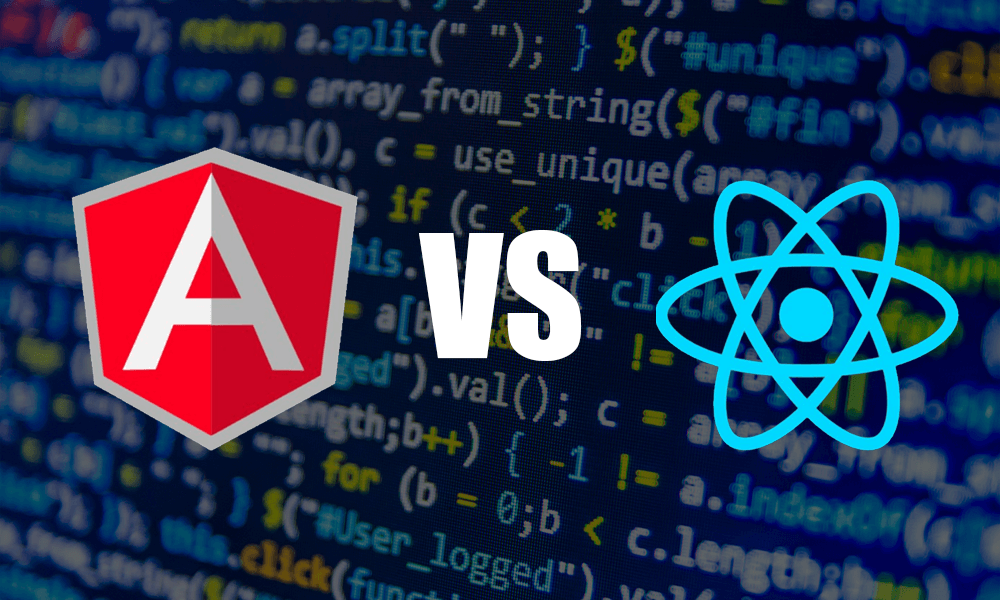Angular and React are both popular JavaScript frameworks used for building web applications.
Angular is a complete framework with a set of tools and features for developing web applications. It uses a template-based syntax, two-way data binding, and a directive-based approach. Angular is best suited for large-scale, complex applications and provides a rich set of features for building scalable, maintainable apps.
React, on the other hand, is a library for building user interfaces and only focuses on the view layer of an application. It uses a virtual DOM and functional components, and its syntax is based on JSX. React is lightweight, fast, and best suited for small to medium-sized applications, where the developers want to have more control over the application architecture.
Both frameworks have their advantages and disadvantages, and the choice between the two will depend on the specific requirements of a project.
Angular:
- Angular is a complete framework that includes everything needed to build a web application, including a templating engine, a component-based architecture, two-way data binding, and a set of tools and features for handling HTTP requests, routing, testing, and more.
- Angular uses TypeScript, a statically typed language, which provides better type checking, improved IDE support, and other benefits compared to JavaScript.
- Angular follows the Model-View-Controller (MVC) design pattern, and its architecture is component-based, making it easier to build and maintain large applications.
- Angular’s two-way data binding allows for automatic updates to the view whenever the model changes and vice versa, making it easier to manage complex state in the application.
React:
- React is a library for building user interfaces and is only concerned with rendering views. It does not include features for HTTP requests, routing, or state management, which need to be handled using additional libraries.
- React uses a virtual DOM, which is a lightweight representation of the actual DOM, and makes updates to the view more efficient, as React only updates the parts of the view that have changed.
- React uses functional components, which are simpler and easier to understand compared to Angular’s component-based architecture. React also supports hooks, a feature that makes it easy to manage state and component lifecycle in functional components.
- React uses JSX, a syntax extension for JavaScript, which allows embedding HTML-like code within JavaScript.
In conclusion, Angular is a full-fledged framework for building web applications, while React is a lightweight library for building user interfaces. Both have their own strengths and weaknesses, and the choice between the two will depend on the specific requirements of the project.

